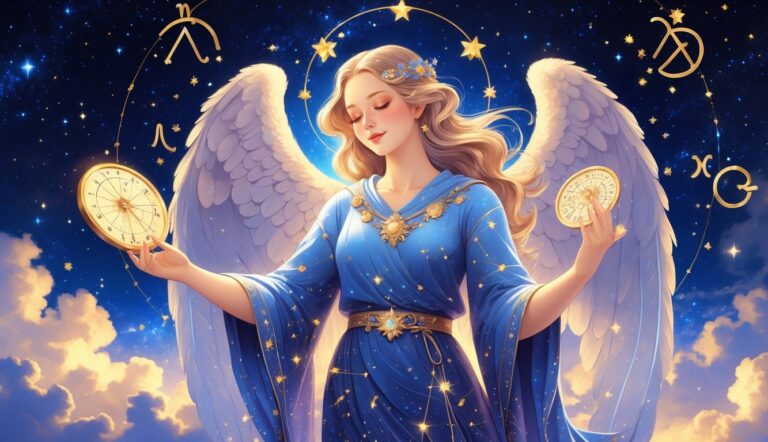Align Your Life with Your True North
The Power Quadrant System decodes your natural talents and pinpoints the career, timing and relationships that let you earn more, love deeper, and wake up eager for the day.
- Uncover your #1 high-income strength
- Draw in partners who raise your energy
- Work when your body’s clock is in “flow”
The sun has captivated human imagination since the dawn of civilization.
As you gaze up at that radiant orb in the sky, have you ever wondered what deeper meanings it holds? The sun symbolizes life, energy, enlightenment, and renewal across many cultures and belief systems.
This celestial body plays a central role in mythologies, religions, and spiritual practices worldwide.
From ancient Egyptian sun gods to modern solar-powered innovations, the sun’s influence on human culture is undeniable.
Its daily journey across the sky has inspired countless metaphors for the cycles of life, death, and rebirth.
You might be surprised by the sun’s diverse symbolic associations.
It represents power, confidence, and clarity in some contexts, while signifying peace and protection in others.
As you explore the rich tapestry of sun symbolism, you’ll discover how this universal icon continues to shape our understanding of the world and ourselves.
Historical Context of Solar Symbolism
The sun has played a central role in human culture and spirituality for millennia.
Ancient civilizations across the globe revered the sun as a powerful deity and life-giving force.
In ancient Egypt, solar worship reached its peak during the Old and New Kingdom periods.
Decode Your Personal Success Blueprint
Power Quadrant System shows you the exact career, relationships, and daily rhythm that match your natural DNA—so you earn more, work happier, and connect deeper.
- Pinpoint your #1 money-making talent
- Erase conflict & attract ideal partners
- Multiply productivity with perfect timing
The sun god Ra was one of the most important deities, often depicted with a solar disk on his head.
Mesopotamian cultures also held the sun in high regard.
The Babylonian sun god Shamash was associated with justice and truth, reflecting the sun’s ability to illuminate and reveal.
Greek mythology featured several solar deities, including Helios, who drove the sun chariot across the sky each day.
This imagery of the sun’s daily journey became a common motif in many cultures.
The Aztecs and Incas of the Americas saw the sun as a supreme deity.
They built impressive temples and performed elaborate rituals to honor the sun’s power and ensure its continued rise.
In many traditions, solar symbols represented cyclical patterns of life, death, and rebirth.
The sun’s daily and yearly cycles mirrored natural rhythms and human experiences.
Tap Into Your Built-In Success GPS
The Power Quadrant System deciphers your genetic blueprint so you can lock onto the career, income and relationships that feel effortless—and wildly rewarding.
- Zero in on your natural high-earning genius
- Sync with partners who boost your vibe
- Wake up driven, finish days fulfilled
Today, remnants of ancient solar worship can still be seen in modern religious and cultural practices, demonstrating the enduring significance of solar symbolism throughout human history.
Cultural Significance
The sun holds profound cultural importance across civilizations.
Its influence permeates ancient beliefs, religious practices, and folklore, shaping human understanding of life, power, and divinity.
Ancient Civilizations
In ancient Egypt, the sun god Ra reigned supreme.
You’d find him depicted with a falcon head and solar disk crown, symbolizing supreme power and creation.
The Aztecs worshipped Huitzilopochtli, a sun and war deity, believing human sacrifices were necessary to fuel the sun’s daily journey.
Ancient Greeks revered Apollo, god of light and the sun, associating him with prophecy, music, and healing.
In China, the sun represented the emperor’s divine authority.
Solar eclipses were seen as heavenly omens, often prompting political and social changes.
Religious Interpretations
Many religions view the sun as a manifestation of divine power.
In Hinduism, you’ll encounter Surya, the sun god, riding his golden chariot across the sky.
The Surya Yantra, a geometric representation, symbolizes the sun’s energy and is used in meditation.
Christianity often uses sun imagery to represent God’s light and truth.
You might see this in church art, where Christ is depicted with a radiant halo.
In Buddhism, the sun symbolizes enlightenment, with its ability to dispel darkness mirroring spiritual awakening.
Mythology and Folklore
Sun myths often feature themes of life, death, and rebirth.
You’ll find stories of sun gods battling darkness, representing the daily cycle of dawn and dusk.
In Japanese mythology, Amaterasu, the sun goddess, brings light to the world by emerging from a cave.
Native American traditions often personify the sun.
The Hopi people see the Sun Spirit as a provider and protector.
In Norse mythology, you’d learn about Sol, the sun goddess, eternally pursued by the wolf Skoll across the sky.
Many cultures use solar symbols in art and rituals.
The spiral, a common motif, represents the sun’s path through the year.
Solar wheels and crosses are prevalent in Celtic and Nordic traditions, symbolizing the sun’s life-giving power.
Scientific Representation
The sun plays a crucial role in scientific understanding.
It serves as a model for stellar processes and provides insights into fundamental physical principles.
You can observe its effects on Earth’s systems and use it as a reference point for astronomical calculations.
Source of Life
The sun is the primary energy source for life on Earth.
You rely on it for photosynthesis, which produces oxygen and forms the base of most food chains.
Its radiation drives weather patterns and climate systems.
Without the sun, Earth would be a frozen, lifeless rock.
Solar energy powers the water cycle, creating rain and distributing fresh water across the planet.
You benefit from this cycle through agriculture, hydroelectric power, and access to clean drinking water.
The sun’s ultraviolet rays also help your body produce vitamin D, essential for bone health.
Astronomical Importance
In astronomy, the sun serves as a benchmark for studying other stars.
You can use its known properties to estimate the size, mass, and composition of distant stellar objects.
The sun’s gravitational pull keeps planets in orbit, forming the solar system you inhabit.
Solar observations have led to breakthroughs in physics, including the discovery of helium and the development of quantum mechanics.
You can study solar phenomena like sunspots and solar flares to better understand stellar magnetic fields and plasma dynamics.
The sun’s position and movement are key to timekeeping and navigation.
You use it to define days, seasons, and years.
Ancient civilizations built structures like Stonehenge to track the sun’s path, laying the groundwork for modern astronomical knowledge.
Psychological Implications
The sun’s symbolism profoundly impacts our mental state and cognitive processes.
Its presence in our lives shapes our perception of reality and influences our emotional well-being.
Enlightenment and Knowledge
You might notice how sunlight illuminates your surroundings, revealing hidden details.
This physical effect mirrors the sun’s symbolic role in expanding your awareness and understanding.
When you gain new insights or “see the light,” you’re tapping into this ancient solar metaphor.
The sun’s daily journey across the sky can inspire your quest for knowledge.
As it rises, you may feel a renewed sense of curiosity and motivation to learn.
This celestial cycle encourages you to embrace continuous growth and self-improvement.
As the day progresses, the shifting light serves as a reminder that knowledge is ever-evolving, just like our personal journeys.
When evening arrives, reflecting on tonight’s moon spiritual meaning can offer deeper insights into your emotions and inner wisdom.
Embracing both the sun’s vibrance and the moon’s mystery allows for a balanced path of discovery and enlightenment.
In many cultures, you’ll find the sun linked to wisdom and clarity of thought.
Its bright rays can represent the dispelling of ignorance and the emergence of truth in your mind.
Positive Influence on Mood
You’ve likely experienced the mood-boosting effects of a sunny day.
This isn’t just a coincidence – sunlight triggers the release of serotonin in your brain, enhancing your sense of well-being and happiness.
The sun’s warmth can make you feel nurtured and comforted.
On a psychological level, this translates to feelings of security and optimism.
You might find yourself more energetic and sociable on bright days.
Seasonal Affective Disorder (SAD) highlights the sun’s crucial role in your mental health.
When sunlight is scarce, you may experience lower mood and energy levels.
This underscores how deeply the sun’s presence affects your psychological state.
The sun’s cycle can also influence your internal rhythms.
Its rise often signals a fresh start, helping you reset negative thought patterns and approach challenges with renewed vigor.
Artistic and Literary Motifs
The sun’s symbolism shines brightly in various artistic and literary works.
Its imagery conveys themes of life, enlightenment, and renewal across different mediums.
Visual Arts
In paintings and sculptures, you’ll often see the sun depicted as a powerful symbol.
Artists use it to represent hope, rebirth, and divine presence.
Think of Vincent van Gogh’s vibrant sunflowers or Claude Monet’s shimmering sunrise scenes.
These works capture the sun’s life-giving energy and transformative qualities.
Ancient cultures incorporated solar symbols in their art too.
Egyptian hieroglyphs featured the sun disk, while Aztec artifacts displayed intricate sun stones.
These visual representations honored the sun’s vital role in their beliefs and daily lives.
Modern artists continue to explore solar imagery.
You might encounter abstract interpretations or stylized sun motifs in contemporary pieces.
These works often reflect on themes of environmental awareness or spiritual enlightenment.
Poetry and Prose
Writers have long drawn inspiration from the sun’s symbolism.
In poetry, you’ll find it used as a metaphor for knowledge, truth, and emotional warmth.
William Blake’s “The Sun-flower” and Emily Dickinson’s “The Sun – just touched the Morning” are prime examples.
Novels often employ sun imagery to mark pivotal moments or character development.
You might recall Hemingway’s “The Sun Also Rises,” where the title itself alludes to renewal and perseverance.
In dystopian literature, the absence of sunlight frequently symbolizes oppression or societal decay.
Mythological tales across cultures feature sun deities and solar-themed narratives.
These stories often explore cycles of life, death, and rebirth, mirroring the sun’s daily journey across the sky.
Contemporary Symbolism
The sun’s symbolism continues to evolve in modern times, taking on new meanings while retaining its timeless significance.
Its imagery permeates various aspects of contemporary culture, from media to popular entertainment.
Modern Media
In today’s digital age, the sun often appears as an icon for weather apps and forecast symbols.
You’ll see it used in logos for renewable energy companies, representing clean power and sustainability.
Social media platforms incorporate sun emojis to convey warmth, positivity, and good vibes in online communication.
News outlets frequently use sunrise imagery to symbolize hope and new beginnings in their reporting.
In advertising, sun-soaked visuals sell everything from vacations to vitamin D supplements, tapping into associations with health and vitality.
Pop Culture
The sun’s symbolism is alive and well in modern music.
Artists use solar imagery in lyrics and album art to express themes of enlightenment and personal growth.
In movies and TV shows, sunrise or sunset scenes often mark pivotal character moments or plot transitions.
In fashion, sun motifs appear on clothing and jewelry as symbols of optimism and free-spirited style.
Meanwhile, video games feature the sun as a power-up or healing element, drawing on its life-giving connotations.
Even in the world of emojis and internet memes, the sun maintains its status as a quick visual shorthand for happiness and good times.






